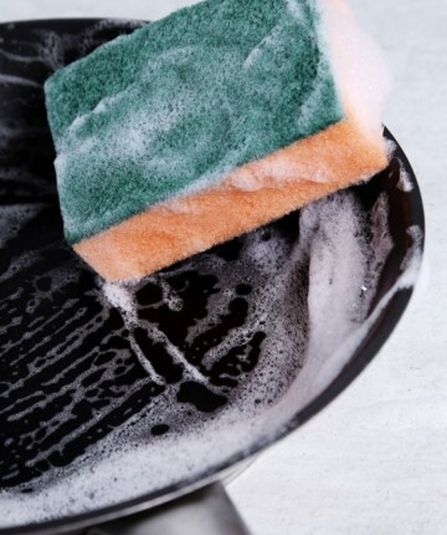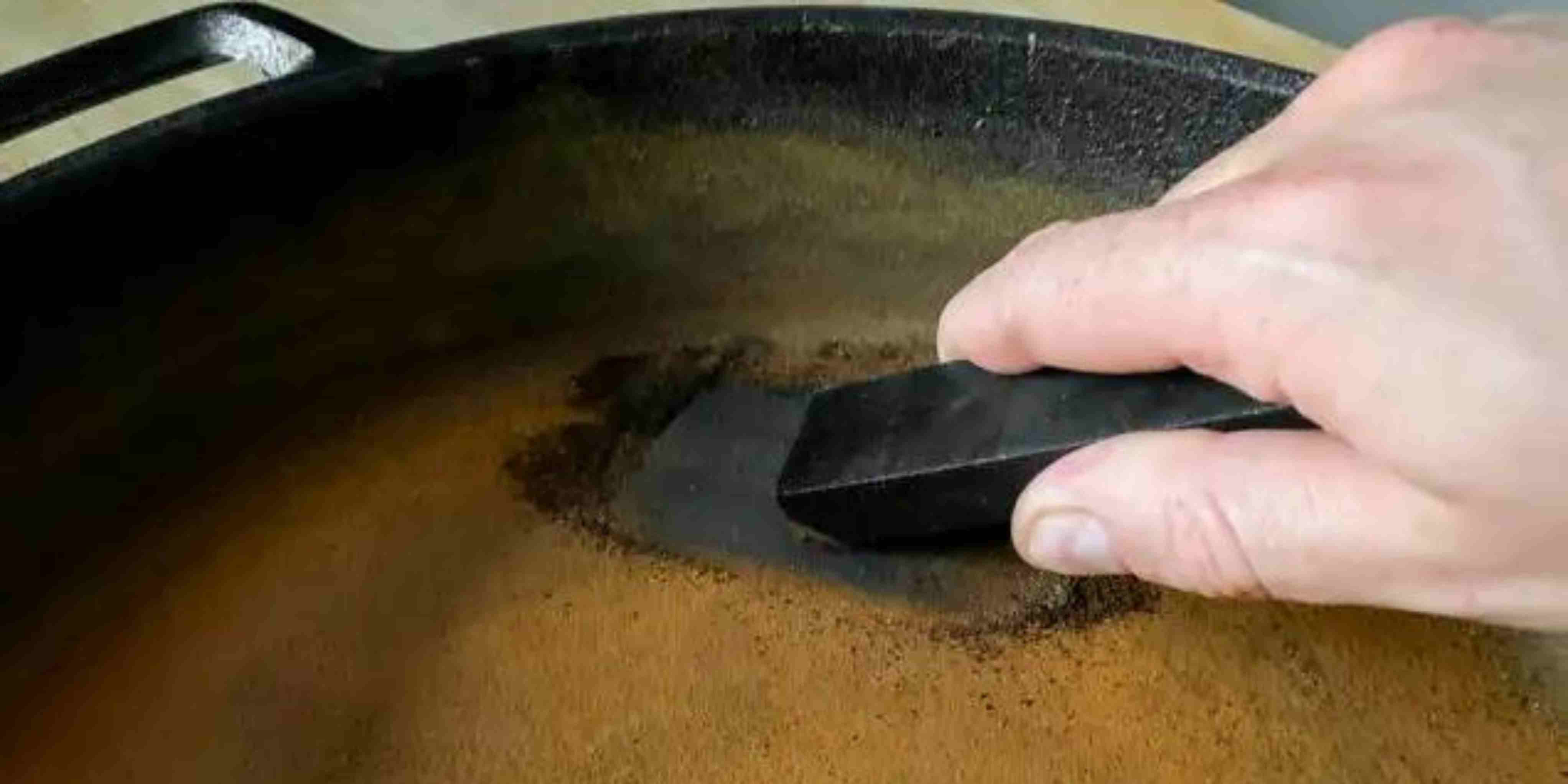How to clean cast iron cookware
.jpg)
Cleaning and seasoning cast iron can be daunting. There is a common misconception that cast iron is delicate and easy to spoil. Reality couldn't be further from the truth. People have been cooking with cast iron for centuries. Its durability and utility have made it a staple in kitchens around the world, from traditional Asian cooking culture to New York steakhouses. Once you learn these easy steps to clean your cast iron skillet or cast iron pot, you'll be ready to tackle any dish or mess!
Five easy steps to clean cast iron
Wipe it:Once your pan/pot has cooled and reached a temperature suitable for you to touch, wipe the inside to remove any oil or food residue. Cleaning the cast iron while it is still warm will reduce the time and effort of cleaning the pan and help prevent food from sticking. If you can clean them by simply wiping them, stop there. Having a small amount of oil after cleaning is not a problem. In fact, keeping the pan/pot/plate from drying out is an important part of long-term maintenance. Over-cleaning your cast iron pan is unnecessary and will only damage its oiling. For many dishes, this will be the only cleaning step necessary. If you cannot clean the cooked food or your dish has a particularly strong taste,
Clean it: After pre-cleaning, wash with warm water and mild dish soap. If your dish requires more aggressive cleaning, use coarse salt or a plastic scrub brush to remove stuck-on food before washing. It's important not to use anything too aggressive, such as steel wire, sponges, or other abrasive cleaning methods, as they will wash away your spice. For particularly hard-to-clean foods, fill the pan/pot halfway with water and heat it over the stove. As the water heats up, the sticky food residue should soften and become easier to remove. After letting the water almost boil, pour it out of the pot and wipe the inside with a cloth to remove any food particles.
Dry it:It is important to rinse and dry your cast iron pan/pot/plate immediately after cleaning. We recommend using a lint-free cloth. NEVER allow cast iron to air dry as this can allow rust to form. This is especially important if you have just used soap. Re-moistening the vessel with oil will be crucial in the next step.
Heat it up: Place your clean cast iron pot on low heat for 5-10 minutes. This will remove any extra moisture left on it after you wipe it with a towel. This further contributes to the opening of the pores of the metal. Remove the pan/pot/plate from the heat, after all the water has evaporated, pour half a teaspoon of oil into the inside of the pan and spread it over the surface with a cloth. Grapeseed oil, canola oil, vegetable oil, or other vegetable oils will do a great job. Be sure to remove excess oil by leaving the surface almost dry after wiping it with a separate cloth.
Store it carefully:Store your cast iron cookware in a cool, dark, dry place or on the stove for regular use. If you have several cast iron pans, avoid stacking them on top of each other for long periods of time, as this can damage the seasoning. We also recommend you hang them proudly on your kitchen walls!
Things you should never do when cleaning a Hosse cast iron pan
You use an abrasive cleaning method, such as a steel sponge: This will reduce or eliminate oiling.
Soaking your cast iron pan/pot/plate in the sink: This will eventually lead to rusty cookware.
You put your dishes in the dishwasher: Again, excessive exposure to moisture will cause rust. In addition, the dishwasher will remove the grease that you worked so long to remove.
How clean is too clean?
Many new cast iron users tend to clean their cast iron cookware as they would their other non-iron cookware and serving utensils. While it's important to clean up cooked food and unwanted strong aromas, over-cleaning cast iron can dry out the surface or strip the oils. Oil is the coating that protects your pan/pot/plate and makes it non-stick. Aggressively removing debris from the bottom can remove your protective seasoning. Also, iron is a porous material. Like other porous materials like wood, you want to maintain a healthy amount of moisture, in this case from oil.
Is it ok to use soap to clean cast iron?
There is perhaps no more controversial question among cast iron enthusiasts than that of washing cast iron with soap. Although many will say that it is never a good idea to use soap on a cast iron pan, in reality this is not the case. While soap is often not necessary to clean a pan when a simple wipe is sufficient, using a small amount of dish soap is perfectly acceptable.
The myth of not using soap with cast iron comes from a misunderstanding of oiling/seasoning. Although soap will degrease your cookware and require you to re-oil the pan, pot or plate before storage, it will not remove the spices.

What is oiling/seasoning?
"Forging" is the term everyone associates with cast iron. There are many myths surrounding the word, as well as misunderstandings about what exactly the term means. Simply put, cast iron seasonings are polymerized oils that are dried and hardened by heat that form a thin protective layer on your cast iron cookware. This layer protects the pan, pot or plate from rust and is a natural, non-toxic barrier between them and your food. Because cast iron is porous in nature, the oil fills the pores before solidifying during polymerization, giving your Hosse cookware a glass-smooth surface.
Seasoning is something that is built up and perfected over time through common use and cooking. Every time you heat up your skillet, pot, or griddle to sear a steak and some vegetables or bake cornbread, you're contributing to the seasoning of your cast iron.
If you accidentally remove your seasoning with pickled foods or want to add a full extra layer of seasoning to the surface, check out our guide to seasoning your cast iron.

How to remove rust from cast iron
When exposed to air or moisture, iron naturally rusts. This compound, also known as iron oxide, is the result of oxidation that occurs when iron comes into contact with oxygen. This is a natural reaction that we always want to avoid with cookware. The best prevention methods are to follow the cleaning steps outlined above. Maintaining a strong coat of polymerized seasoning as well as a light oil base will prevent rust in almost all cases.
If you find rust on your pan/pot/plate as a result of water droplets, damaged seasoning, or soaking in the sink overnight, first try to remove it with an oiled cloth. If the rust turns out to be more significant and cannot be removed with this method, this is the time to use an abrasive sponge or wire. Other effective methods include rubbing with coarse table salt and vegetable oil using a halved potato. After removing the rust and washing the pan, follow our instructions for re-seasoning cast iron.
The best methods of storing cast iron
When you're done cleaning or seasoning your cast iron pan, you'll need to think about where and how to store it. The best place to store your Hosse pan, pot or hot plate is right on the stove, ready for use the next day. For those who prefer to keep their dishes out of the way, places with high amounts of moisture, such as near a sink or dishwasher, should be avoided. Usually the best place would be in a closed cabinet or closet. Avoid the habit of stacking your pans on top of each other as this can damage the seasoning. Another great way to store your cast iron pan is to hang it under a cabinet or on the wall, showing off its unique Hosse design.
